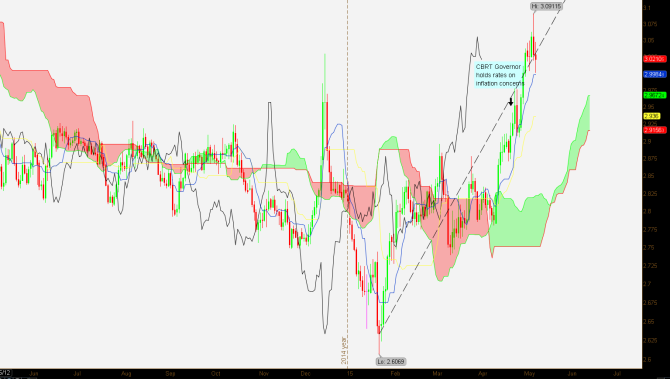Turkey is strategically located at the crossroads of the Arabian Peninsula, South Eastern Europe and Western Asia. Ports on the Black Sea and Mediterranean coast lines offer easy trade access to southern Europe, especially Greece and Italy, North Africa, the Middle East and Russia via the Kerch Straight.
The IMF defines Turkey as an emerging market economy. It’s a member of the G-20, OECD, and WTO and most importantly the EUCU, a mutual customs and tariff agreement with the EU. Agriculture, once the largest economic sector, still employees about ¼ of the workforce. Turkey has greatly reduced state control in key sectors, such as communications, banking and industry. Its economy is free market with a growing entrepreneurial middle-class. Traditionally, Turkey was known for its textile industry but newer industries such as electronics and manufacturing have become equally important to the economy. Also, because of its strategic location it’s an ideal pipeline corridor for the European Commission’s ‘Southern Gas Corridor’ initiative eventually supply gas and oil from both Caspian Sea and Middle Eastern to Europe.
Guest post by Mike Scrive of Accendo Markets
Having experienced a serious banking crisis 14 years ago, IMF and Turkey establish financial and budget reforms which put Turkey on fast track growth averaging 6% annually. Debt is 36% of GDP. Sovereign debt ratings straddle between investment and non-investment grade. PPP-GDP is €1.69 trillion, with a real growth rate of 3% and per capita PPP-GDP of €16,203, 61st out of 185 nations. The gross national savings rate is 14% of GDP and household consumption is 71% of GDP. Unemployment is in line with Eurozone unemployment at 11.3%.
The primary objective of the Turkish Central Bank (Türkiye Cumhuriyet Merkez Bankası, CBRT) is price stability. The 10 year bond yields 9.23%; the core inflation rate is a rather high 8.89% (2014). Its three month interbank rate at 10.75% and the repurchase rate is 7.50%. It should be noted that according the CBRT: “The Bank shall, provided that it shall not be in confliction with the objective of achieving and maintaining price stability, support the growth and employment policies of the Government“ Hence, it seems that government ultimately sets policy as long as inflation is within reasonable bounds. Indeed, a recent disagreement has been reported between CBRT Governor Basci and President Erdogan. On 22 April the CBRT decided to hold the line on inflation by not cutting rates to stimulate the economy, while the government argued for easing to stimulate slow economic growth. It should also be noted that national elections are scheduled for 7 June.
Industry accounts for about 27% of GDP, agriculture for about 8.2% and services account for almost 65%. Major industries are textiles, food processing, auto manufacturing, and mining. The current account deficit is €3.2 billion. Turkey’s main export partners are Germany, Iraq, U.K., Russia, Italy and France. Exports include textiles, iron and steel, appliances, chemicals and pharmaceuticals. It should also be noted that Turkey has an growing shipbuilding industry and a maritime collaboration with Norway. The types of ships built include commercial fishing boats, live fish carriers, aquaculture feed carriers, tug boats and other container vessels. The Turkish ports are increasingly using Norwegian made maritime construction equipment. Turkey’s main import partners are Russia, China, Germany, Italy, U.S. and Iran. Imports include machinery, chemicals, intermediate goods, and fuel. It should also be noted that Turkey is host to over 1.7 million refugees from Syria and Iraq. Turkey is contributing over €2.68 billion for humanitarian aid.
| EUR/TRY | Price Location | Span A over Span B | Tenkan vs Kijun | Sentiment | Recent Trend |
| Trend Positive | Above Cloud | Support at 2.8212 | Crossover Bullish | Positive | Sharply Positive4 |
The Euro is the comparison currency. Without too much elaboration, the ECB is still engaged in its no-holds-barred bond buying program. Recently there has been a correcting trend in European and U.S. government bonds. The Turkish Lira has, in the past few weeks experience a sudden weakening, EUR/TRY reaching a 52 week high, 3.09115 per Euro, still well short of the 2 year high of 3.27319 per Euro. The Ichimoku chart demonstrates a see-saw EUR/TRY trend until 9 April when the Lira began a three week plunge vs the Euro and other major currencies.
The risk here may be more ‘political micro-management’ than Turkish macroeconomics. If that is the case, it would mean a loosening of economic policy and thus inflationary. Even, if the CBRT manages to maintain rates the annual inflation rate is still rather high. Quite the contrary there is nearly zero inflation in the Eurozone, hence even if the CBRT maintains policy; it will still weaken against the Euro. Further, should the sudden spike in EU sovereign rates stifle the nascent recovery causing a flight to quality, the Turkish Lira will weaken further. Generally, the odds of a strengthening Turkish Lira in the foreseeable future are not on the side of the Lira.
“CFDs, spread betting and FX can result in losses exceeding your initial deposit. They are not suitable for everyone, so please ensure you understand the risks. Seek independent financial advice if necessary. Nothing in this article should be considered a personal recommendation. It does not account for your personal circumstances or appetite for risk.”

